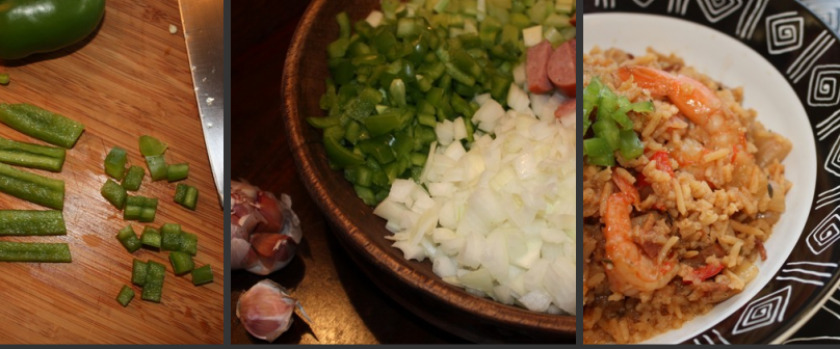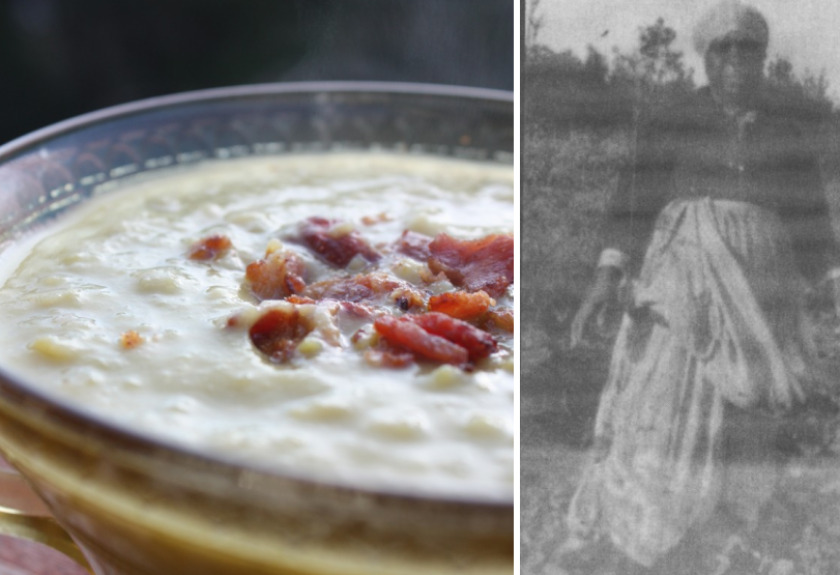
by Toni Tipton-Martin | Mar 10, 2010 | Entrepreneurs
I was hanging out in East Austin as Black History Month drew to a close when I happened upon a series of banners hanging around historic venues. The proud displays featured the names and pictures of local African Americans who had accomplished great things in various careers — from engineering and medicine to education and the arts. As you might have already guessed, women in the food industry were not included.
That is what makes antebellum African American cookbooks such an important and fascinating discovery for me. During Reconstruction, ex-slaves like Lucille Bishop Smith, Flossie Morris, and Mary Bernon were adding entrepreneurial skills to their culinary proficiency, but their work was unknown beyond the tiny communities in which they lived.
A former slave named Abby Fisher also established a reputation for excellence in cookery and business along the shores of the Pacific, but she did something extraordinary for the time: She published a cookbook to prove it. So did Malinda Russell, a free woman of color.
Although unschooled, Fisher operated a pickles and preserves manufacturing business with her husband, Alexander in San Francisco. She won awards and medals at various fairs in California. And in 1881 she released What Mrs. Fisher Knows About Old Southern Cooking, a collection of more than 150 recipes – “a book of my knowledge, based on an experience of upwards of 35 years in the art of cooking.”
Fisher’s trailblazing cookbook bears witness to a legacy of excellence among black cooks, and to her hidden heritage of African-inspired dishes, including several for okra and black-eyed peas, gumbo, and jambalaya – noteworthy on any day, but exceptionally so during the prickly era of national reform in which she lived.
The Historical Notes in the Afterword to What Mrs. Fisher Knows, historian Karen Hess tells us why, in these tough economic times, we need to remember Abby Fisher: “She was clearly a remarkably resourceful woman, one of those strong matriarchal types who kept their families together under the most adverse circumstances.”
Malinda Russell’s A Domestic Cook Book: Containing Useful Receipts for the Kitchen, was a fragile, 40-page collection, printed in 1866 in Paw Paw, Michigan, before the Longone Center for American Culinary Research at the University of Michigan reproduced it. I was blessed to be part of the process, introducing Malinda to her first audience, and reminding them that this collection also teaches us how to use cooking to manage scarce resources.
In her brief autobiography, this free woman of color tells us a great deal about herself – a stark contrast to Fisher’s contrite spirit, and surprising considering the post-Civil War tensions of the time. She was a hard-working, single mother, a business owner, and the ladies of the community esteemed her.
Including their words of endorsement in her preface made good business sense, but we also can see the gesture as a measure of her integrity. Russell acknowledged everyone responsible for her talent and her project – an unusual action in light of the out-and-out plagiarism that was common practice among her publishing contemporaries. She said she apprenticed under the tutelage of Fanny Steward, a colored cook of Virginia, that she followed “the plan of The Virginia House-Wife,” and attribution accompanied several of her prescriptions.
Together, this free woman, Fisher, and to some extent the male authors of house servants’ guides, corroborate the notion of culinary literacy among black cooks. The modest collections of these masterful authors did for the art of African American cooking what Amelia Simmons’s little book did to distinguish the American cooking style from English cookery in 1796: They are like a culinary Emancipation Proclamation for black cooks.
*
Abby Fisher’s recipe for “Jumberlie — a Creole dish,” is a masterpiece of simplicity. It relies on farm-fresh chicken, smoked ham, and what she calls “high seasoning.” I’ve adapted her dish for modern kitchens, adding shrimp and sausage to the mix for a hearty one-pot meal. Serve it with crusty French bread and a cool crisp salad, and then wonder, as I do with every bite what delicacies the other women of the time might have left us if they had the means, time and resources to do so.
In Her Kitchen
Jambalaya
Ingredients
- 5 slices bacon, diced
- 1 onion, diced
- 1 green pepper, diced
- 1 stalk celery, diced
- 1 tablespoon minced garlic
- 3/4 teaspoon dried thyme
- 1 1/2 cups uncooked rice
- 1 cup diced tomatoes
- 3 cups chicken broth
- 1 bay leaf
- 1/2 pound smoked ham or sausage
- 1/2 teaspoon salt
- 1/4 teaspoon cayenne pepper
- 1/2 pound shrimp, peeled and deveined
- Hot pepper sauce
Instructions
- Fry bacon pieces in a deep skillet or Dutch oven until crisp. Remove to paper towels to drain and set aside. Add onion, green pepper, celery, garlic and thyme to the pan and saute until the vegetables are tender but still crisp. Add rice and continue to cook until the mixture is light brown. Stir in tomatoes, broth, bay leaf, ham, salt and pepper. Bring to boil, then reduce heat to simmer and cook, covered 15 minutes. Add shrimp to pan and cook 5 minutes longer or until shrimp turn pink. Adjust seasoning and serve with hot pepper sauce.
Number of servings: 8
In Her Kitchen

by Toni Tipton-Martin | Mar 3, 2010 | Plantation Cooks
Last week, Hollywood helped me imagine a place in the spotlight for the women of The Jemima Code.
A world-renowned actor and a producer appeared on “Good Morning America” to discuss their documentary film. The project tells the story of unsung heroes, tracing obscure African-Americans from the earliest days of the republic through today. Historical documents illustrate the struggle. Archival materials expose unknown contributions to American culture. Dramatic and emotional readings by noted Hollywood personalities give life to their thoughts.
The film is called For Love of Liberty: The Story of America’s Black Patriots, but it could just as easily have been titled after this blog: The Jemima Code: The Story of America’s Black Cooks.
Why?
Take a look at Southern cookery literature from the colonial era to Reconstruction and post-World War I and you’ll see stories of real women cooking, feeding and nurturing families as those folks went about their daily work. But you’ll have to look carefully. The recorders of history mostly overlooked the contributions made by these people.
To hear the antebellum plantation mistress tell it, she acquired a new recipe, read it to her kitchen slave, and then stood over the cook while she prepared the dish. The cook might later apply some African technique, or add a local ingredient, incorporate a leftover into it, or simply adjust the formula because of an environmental factor — like humidity or uncooperative chickens who didn’t lay enough eggs that morning. Over time the dish became something new and original – a “Southern creation.”
The “exotic-sounding preparations were first known through English cookbooks, contained various strands of direct Indian influence, and, were developed by African American ingenuity and creativity,” says historian Karen Hess, but Aunt Dinah entered history as the provider of labor.
Without property rights, the cooks lost ownership of the hybridized cuisine they created when their “soul” food, (black-eyed peas and wild greens) passed from the cabin to the Big House. They were like the slaves who produced ironwork, baskets and architecture: they transmitted their craft orally and left little written proof of their accomplishments.
Once in written form, these “new, original” American formulas were sold to an eager cookbook-buying audience, rarely acknowledging any debt owed to the servants who modified the English recipes – whether the cooks were the indentured servants of the North, or the slaves of the South.
Consider the diary of Emily Wharton Sinkler.
Emily was evidently a very busy low-country plantation mistress. In her journal and letters she describes the anticipation of arriving visitors. Mixing and mingling at the horse races. Scouring the countryside for cuttings and root clippings for her gardens, and days filled with reading, writing, music, long walks, and horesriding. The portrait of Emily also details her love of traveling and shopping in Charleston and Philadelphia, the wonderment of lavish dinner parties, her housekeeping experiences, rigorous Bible studies, and the family’s strict observation of the Sabbath.
Her receipt collection is just as full as her schedule, boasting recipes for numerous items produced by her family’s enterprise, including recipes for household cleaning solvents, dyes, soap, and candles.
Interestingly, there is little mention of Emily’s servants, even though some of her favorite dishes reflect the African influence. Like other authors of the era, Emily “consigned cooks to anonymity, depicting them in condescending caricatures as bandanna-headed mammies, and kindhearted, but formidable servants,” says culinary historian Barbara Haber. And, I can’t help but wonder: When did hard-working Emily sleep?
Fortunately for disparaged cooks like Chloe, modern copyright law validates a notion popularized by the America Eats Project, that: “The making of the masterpiece does not lie in the food, but in the preparation.”
The culinary publishing industry has long presumed, that changing a single ingredient or step in the method spawns a new dish and therefore new ownership. This standard allows that even a cook whose imagination is first stirred by a written recipe, but who substitutes key lime juice for lemon, opts for a different cut of meat, increases the amount of sweetening, or for that matter changes sugar to molasses can and should expect her name to follow the recipe title.
If that is true, then the recipes slaves like Chloe created while crossing culinary boundaries in the Sinkler household are a strong witness to the African American cook’s reputation, and testify to their value as worthy documentary subjects.
No, these women didn’t risk their lives for their country. They just provided the nourishment for those who did.
*
In the introduction to An Antebellum Plantation Household, author Anne Sinkler Whaley LeClercq writes that Emily had various receipts for pea soup, and she especially prized fresh peas. The addition of salt pork and black-eyed peas to Emily’s recipe for Winter Pea Soup shows the slave influence. I adapted her recipe for modern tastes. It is perfect for the end of winter and is dedicated to Chloe, her cook and to Maum Mary, shown above picking peppers. The dish is already rich in fiber, but if you want to make it a power-house, go ahead and stir in cooked black-eyed peas to your liking.
In Her Kitchen
Split Pea Soup
Ingredients
- 2 cups green split peas
- 1 ham bone
- 1 cup chopped onions
- 1 large carrot, diced
- 1 large stalk celery, diced
- 1 large clove garlic, minced
- Salt, pepper
Instructions
- Place peas in a large saucepot and add enough water to cover. Soak overnight and drain. Or, to reduce cooking time, bring the peas and water to boil and boil 2 to 3 minutes, then turn off the heat and cover. Let stand 1 hour. Drain. Add 2 quarts water, ham bone, onions, carrot, celery and garlic to the pot. Bring to boil, then reduce heat and simmer gently about 1 1/2 hours, or until peas are tender. Remove bone from soup and cut off the meat. Dice and return to the soup. Season to taste with salt and pepper.
Number of servings: 6
In Her Kitchen




Comments